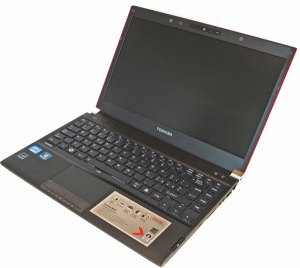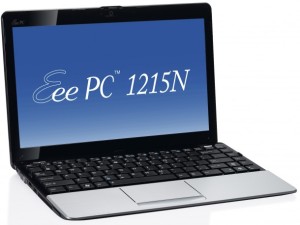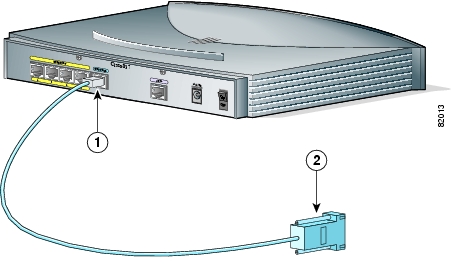Hi all,
a while ago I started writing here and there things in this blog to find them later as big online memo for me and who ever needs it.
Here we are again, life changed a bit for me I didn’t have time to test new things etc etc.. and especially I don’t have my “basement” with all that sort of music/electronic/computer/dust stuff 🙂
Anyway enough with the nostalgia, I had to create a couple of Lion USB Boot Disks at work and as well know, Lion has to be downloaded and it is apparently hardware specific as well (the downloaded dmg)
Lion DiskMaker 2(http://blog.gete.net/lion-diskmaker-us/) does the job very well, I had no problem creating a drive with a DMG for MacPro a couple of months ago, but yesterday I downloaded the DMG image for my Macbook and I found Lion DiskMaker 2 complaining about:
The disk could not be created because of an error: An error occured: 1.2012-09-27 12:34:34.836 defaults[56841:f07]
The domain/default pair of (/Volumes/Mac OS X Install ESD/System/Library/CoreServices/SystemVersion, ProductVersion) does not exist
Well basically (don’t know why) Apple changed the Volume names inside the DMG from Mac OSX Install ESD to OSX Install ESD etc etc..and of course the script ran by DiskMaker is not working anymore… (see below the different volume names between the “old” dmg I had a the latest downloaded)
Workaround:
Just open the Application folder from Finder right click on Lion DiskMaker 2 select Show package contents and browse to Scripts(full path here I’m lazy 🙂 /Applications/Lion DiskMaker 2.app/Contents/Resources/Scripts) open the script main.scpt(and make a copy!)
From the menu select Edit/Find and then do a replace all “Mac OS X Install ESD” to “OS X Install ESD” and all “Mac OS X Base System” in “OS X Base System”

Run again Lion Disk Maker 2 and it should works… at least works for me… BTW the image I downloaded on the Macbook works as well on my MacPro (don’t who started this rumor about hw specific dmgs.. maybe the older releases of Lion… the one I’m using is 10.7.4 and below for the most expert users there’s PlatformSupport.plist with the supported hw..)
<?xml version="1.0" encoding="UTF-8"?> <!DOCTYPE plist PUBLIC "-//Apple//DTD PLIST 1.0//EN" "http://www.apple.com/DTDs/PropertyList-1.0.dtd"> <plist version="1.0"> <dict> <key>SupportedBoardIds</key> <array> <string>Mac-F2268DC8</string> <string>Mac-F22C86C8</string> <string>Mac-F22587C8</string> <string>Mac-F2218FA9</string> <string>Mac-F2218EA9</string> <string>Mac-F42D86A9</string> <string>Mac-F22C8AC8</string> <string>Mac-F22586C8</string> <string>Mac-942B59F58194171B</string> <string>Mac-F226BEC8</string> <string>Mac-F4218FC8</string> <string>Mac-942459F5819B171B</string> <string>Mac-2E6FAB96566FE58C</string> <string>Mac-7BA5B2794B2CDB12</string> <string>Mac-F4218EC8</string> <string>Mac-F2208EC8</string> <string>Mac-4B7AC7E43945597E</string> <string>Mac-F22C89C8</string> <string>Mac-F22587A1</string> <string>Mac-F221DCC8</string> <string>Mac-F42388C8</string> <string>Mac-F223BEC8</string> <string>Mac-F4238CC8</string> <string>Mac-F222BEC8</string> <string>Mac-F227BEC8</string> <string>Mac-F4208AC8</string> <string>Mac-F22788A9</string> <string>Mac-66F35F19FE2A0D05</string> <string>Mac-F4238BC8</string> <string>Mac-F221BEC8</string> <string>Mac-C08A6BB70A942AC2</string> <string>Mac-8ED6AF5B48C039E1</string> <string>Mac-F2238AC8</string> <string>Mac-F4208EAA</string> <string>Mac-F22788C8</string> <string>Mac-6F01561E16C75D06</string> <string>Mac-F2268EC8</string> <string>Mac-F2218EC8</string> <string>Mac-F22589C8</string> <string>Mac-F4228EC8</string> <string>Mac-F22788AA</string> <string>Mac-F42C86C8</string> <string>Mac-F4208CA9</string> <string>Mac-942C5DF58193131B</string> <string>Mac-F4208CAA</string> <string>Mac-F42289C8</string> <string>Mac-F2268CC8</string> <string>Mac-F4208DC8</string> <string>Mac-F2218FC8</string> <string>Mac-742912EFDBEE19B3</string> <string>Mac-F4208DA9</string> <string>Mac-F42D89C8</string> <string>Mac-F2238BAE</string> <string>Mac-F42D89A9</string> <string>Mac-F2268AC8</string> <string>Mac-F42C89C8</string> <string>Mac-942452F5819B1C1B</string> <string>Mac-F42786A9</string> <string>Mac-F42D88C8</string> <string>Mac-F42187C8</string> <string>Mac-94245B3640C91C81</string> <string>Mac-F42D86C8</string> <string>Mac-4BC72D62AD45599E</string> <string>Mac-F2268DAE</string> <string>Mac-F42C8CC8</string> <string>Mac-F42C88C8</string> <string>Mac-94245A3940C91C80</string> <string>Mac-F42386C8</string> <string>Mac-C3EC7CD22292981F</string> <string>Mac-942B5BF58194151B</string> <string>Mac-F42189C8</string> </array> <key>SupportedModelProperties</key> <array> <string>MacBookPro4,1</string> <string>MacPro2,1</string> <string>Macmini5,2</string> <string>Macmini5,1</string> <string>MacBookPro5,1</string> <string>iMac6,1</string> <string>MacPro4,1</string> <string>MacBookPro5,2</string> <string>iMac8,1</string> <string>MacBookPro5,4</string> <string>MacBookAir4,2</string> <string>Macmini2,1</string> <string>iMac5,2</string> <string>iMac11,3</string> <string>MacBookPro8,2</string> <string>MacBookPro3,1</string> <string>Macmini5,3</string> <string>MacPro5,1</string> <string>Macmini4,1</string> <string>iMac9,1</string> <string>Macmini3,1</string> <string>MacBookPro6,1</string> <string>MacBookPro2,2</string> <string>MacBookPro2,1</string> <string>iMac12,2</string> <string>MacBook3,1</string> <string>MacPro3,1</string> <string>MacBook5,1</string> <string>MacBook5,2</string> <string>iMac11,1</string> <string>iMac10,1</string> <string>MacBookPro7,1</string> <string>MacBook2,1</string> <string>MacBookAir4,1</string> <string>MacBookPro5,3</string> <string>MacBookPro6,2</string> <string>iMac12,1</string> <string>MacBookPro5,5</string> <string>iMac11,2</string> <string>Xserve2,1</string> <string>MacBookAir3,1</string> <string>MacBookAir3,2</string> <string>MacBookAir1,1</string> <string>Xserve3,1</string> <string>MacBookAir2,1</string> <string>Xserve1,1</string> <string>iMac5,1</string> <string>MacBookPro8,1</string> <string>MacBook7,1</string> <string>MacBookPro8,3</string> <string>iMac7,1</string> <string>MacBook6,1</string> <string>MacBook4,1</string> <string>MacPro1,1</string> </array> </dict> </plist>
Hope that helps…
See ya!











